Samurai Medicine
By Paul 'Batman' O'Brien
B.A., N.C.E.H.S., Dip. Acu., Adv. Dip. OBB, Cert Clin. Med. Pn1, PN-SSR, PN-NCA, M.AFPA, M.ETCMA, M.C.Th.A.
Check out this introduction to Samurai Medicine below!
Military Medicine
Samurai Medicine finds it origins in Traditional Chinese Medicine, and was an outgrowth of military warfare. China had been a battlefield for continued strife and civil war for hundreds of years. Those injured on the plains of combat needed to be treated quickly and effectively so that they could return to the fight as soon as possible. No other field of medicine has been as battle-tested as TCM, literally.
The armies of the emperor and those of the various families of ancient China were composed of martial artists who trained in far fiercer regimes than the typical, modern martial arts class. Where today a strained neck occurs as a result of sleeping at an odd angle, poor posture or as the result of training accident, back then it was a near daily occurrence in the training for brutal battle.
Dislocated joints, broken bones, sprains, contusions, lacerations and open blade wounds were a routine part of the soldier's life – the professional martial artist's life. And as such, a comprehensive and effective system of treating these conditions was needed. One that produced results quickly.
During the centuries of martial study, the Daoist recluses, Shaolin monks, heads of family styles, military strategists and adept masters developed these healing methods to treat the common injuries they experienced first-hand. In so doing, their herbal formulas, physical techniques and preventative health measures became common in usage and a crucial part of the traditional Chinese medical system.
Of course many would scoff and say that thousands died from infections caused by cuts etc. back then, before we had the miracle of modern surgical techniques, antibiotics and antifungals. And yet, there were more casualties from such conditions during the American Civil War than in ancient China. Ancient Chinese medicine was a complete medicinal system with a large area specialising in herbal formulas that produced the same therapeutic effects – killing pain, stopping infection, reducing inflammation and swelling, and regenerating damaged tissue.
Still though, many discount these treatments as ineffective, simply assuming that modern medicine's answers are the best because they are the most recent. Yet because those same medicinal techniques are borne out of recent history, Western medicine has so much yet to discover, with advancements being made every day.
Traditional Chinese Medicine is the same. On average I have to read 15 medical publications each month to keep up with the current developments in TCM. Just because it's based on tradition, doesn't mean it stopped progressing or developing its techniques – it, just like Western biomedicine, continues to refine its understanding. East Asian medicine, such as TCM, simply has a far longer and greater body of research than biomedicine. For instance, let's take the example of surgery.
Surgery in 200 AD
Surgery in TCM, you've got be kidding me? Nope, Hua Tuo (a Qing dynasty portrait of Hua Tuo is opposite), one of the most famous doctors of the Han dynasty (206 BC–220 AD) was performing successful, painless surgeries using nothing but herbal antiseptics and painkillers. Those same skills and techniques have been developed and refined over the last 1800 years, and in the People's Republic of China many surgeries are performed using only acupuncture and herbal formulas. These surgeries, such as the open heart surgery filmed by the BBC in 2006, showcase some of the most powerful tools of TCM. In that operation for instance, no anaesthesia was required, thus substantially reducing the risk of the operation, dramatically cutting the cost (one third of the price of the same procedure with anaesthetic), and reducing the recovery period to just 3 days.
But back to ancient China.
By the Tang dynasty, Chinese medicine had already established a rich tradition based on effective, repeatable and objectively-verifiable results. The Shaolin temple became a repository for this medical knowledge, both the practice of TCM and physical rehabilitation and preventative exercises, such as the martial arts and Qigong etc. In fact the Shaolin prized their martial medical knowledge to such an extent that it was for many years their most closely-guarded secret, passed down by oral tradition only.
The subsequent destruction of the Shaolin temple during the Qing dynasty is one well known to martial artists. Aside from modern media references (Pai Mai and the White Lotus? Bill? Anyone?), it lead to the dissemination of the martial arts as the surviving monks spread out and moved through the country. It also led to the dissemination of medical knowledge – including to the shores of Japan and Korea in the 6th century A.D, where the ideas continued to be developed in these unique cultural backdrops into what we would come to know as samurai medicine.
The First Samurai Healers
During Japan's tumultuous and violent middle ages, the time of the Sengoku period (c. 1467–c. 1573, literally meaning a "100-year war") was an age of violent conflict among the samurai (professional martial artists and soldiers in the employ of powerful feudal warlords known as daimyo). Acupuncture and Traditional Chinese Medicine was the primary form of healthcare, as it had been since it was first introduced to Japan by way of Korea in 562 AD.
Even after the introduction of early Western biomedicine, the Japanese samurai, now largely at peace after the battle of Sekigahara in 1600, continued to refine the methods of Traditional Chinese Medicine.
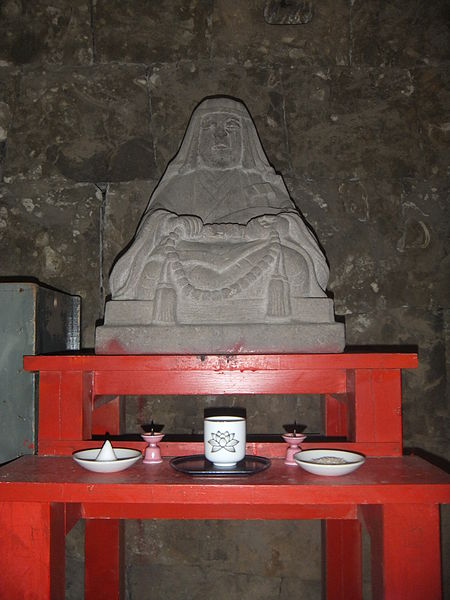 A statue of Sugiyama Waichi in Tokyo
A statue of Sugiyama Waichi in TokyoOne of the most important of these samurai medicine men was a samurai known as Sugiyama Waichi (1614–1694, pictured above). A remarkable man, he went blind at an early age and dedicated his life to healing and medicine. In this manner he could maintain the honour of his family and fulfil his role as a samurai (the word samurai comes from the word saburau and means “one who serves”). In dedicating his life to healing others, Sugiyama Waichi became a blind warrior fighting the enemies of illness and disease.
He is considered the father of Japanese acupuncture and developed shinkan, the guide tube model of needle insertion, which is used in many acupuncture practices to this day, including my own.
And in his own way, this samurai saved the life of Shogun (the military ruler of Japan) Tsunayoshi Tokugawa (1646–1709). The Shogun fell ill with a seemingly untreatable neurotic disease. Where other physicians failed, Sugiyama Waichi succeeded, earning the Shogun's immense gratitude. He became the Shogun's personal physician, and acquired titles and a large estate, which Sugiyama would later use to found the first dedicated school for the blind.
Today, each and every treatment I provide follows the legacy of Sugiyama Waichi.
But while Sugiyama Waichi may be the father of Japanese acupuncture, he was by no means alone. Other samurai such as Kaibara Ekiken (1630–1714) and Tachibana Nankei (1753–1805) remain forces of illumination and education in the ways of the health and vitality of the samurai, thanks to their texts and teachings.
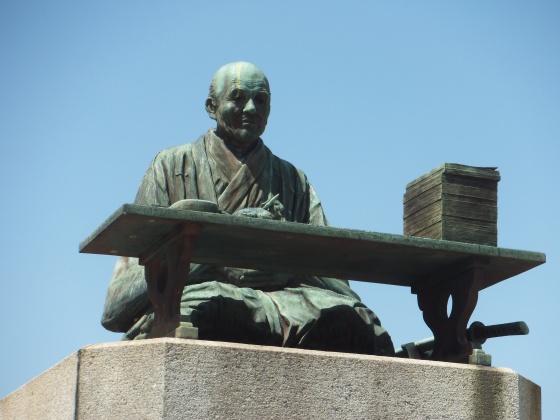 Kaibara Ekiken
Kaibara EkikenKaibara was a samurai and advisor of smaurai medicine and science to the daimyō (feudal lord) of Fukuoka Domain in Chikuzen Province. He was a polygot of the highest order and dedicated his life to the combination of Confucian 'natural law' with a rigorous study of Botany and Japanese Materia medica, part of Kanpō, (Japanese Traditional Medicine).
In his most celebrated text on the topic, Yamato honzō, (Medicinal herbs of Japan), Kaibara expanded on the medicinal herbs of Chinese Medicine and introduced herbs specific to Japan.
His knowledge and reputation was held in such reverence that the 19th-century German Japanologist Philipp Franz von Siebold called him the "Aristotle of Japan".
Of particular interest to those studying the samurai I would highly recommend you read Kaibara's excellent tome, Yōjōkun (The Book of Life-nourishing Principles), published in 1713. This text focus on explaining TCM dietary principles, medical methods, herbal formulas and acupuncture techniques, along with lifestyle advice - for a very specific audience - his fellow samurai. As such, knowing his target readers, Kaibara often prefaces his advice in terms of military strategy.
One of my favorite pieces of samurai medicine advice, one of which I frequently quote to my patients is from the Yōjōkun...
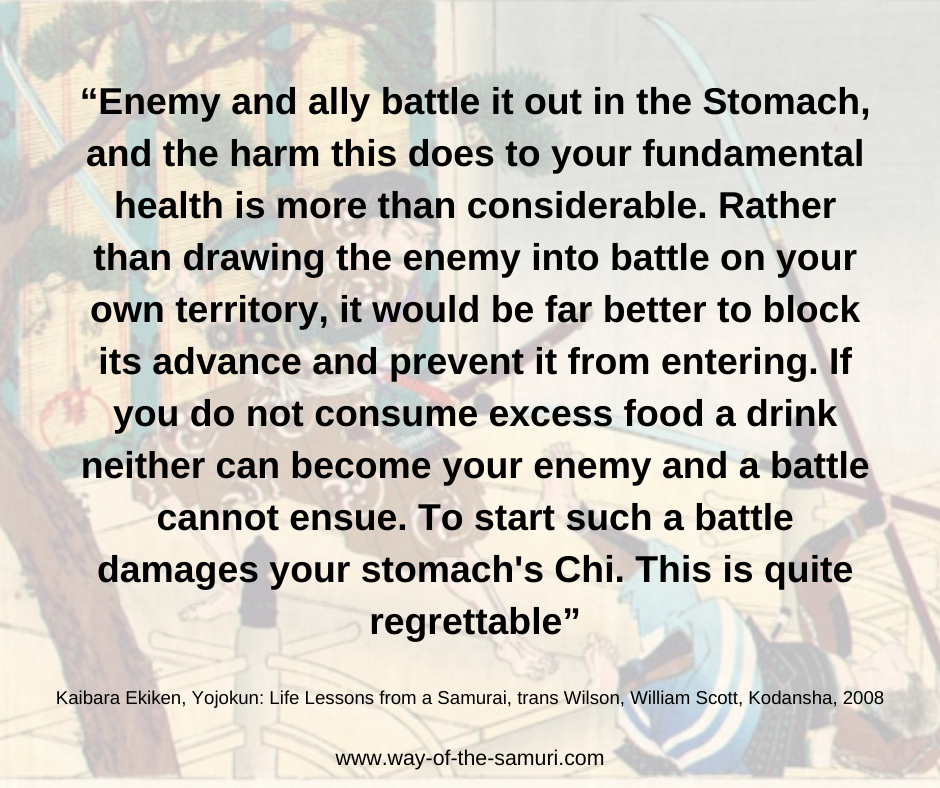
The Basics of Samurai Medicine
Samurai Medicine, though based on Traditional Chinese Medicine, developed it's own unique flavor and focus, inline with the philosophies of the time, the changing nature of warfare and technological and scientific advancements.
Despite the changes it remained made up of the same core fundamental practices:
1. Samurai Nutrition
"He that takes medicine and neglects diet, wastes the skills of the physician."
-Ancient Chinese proverb
The advice you above is what I tell my patients every day. The key to a long life, limitless energy, a body free from illness and disease is often what you put into it. Nutrition is the corner stone of good health. We often hear that you can't out train a bad diet. That's true. But I'd go one step further and say you can't enjoy a fulfilling, energetic and vibrant life without a good diet. But it's more than just what you eat; it's how you eat too.
The truth is that samurai nutrition is a simple matter. In fact, I can sum it up in 4 simple points;
- Eat plain, simple foods, mostly vegetables and lean meat
- Make everything warm and soupy and easy to digest
- Eat to schedule, not demand.
- Eat till your 70-80% full
Do that, and your 90% of the way there.
In fact, there is a saying in Japan, from the time of the samurai:
Hara hachi bun me (腹八分目)
Eat Until You Are 80% Full
This advice actually predates the samurai by several hundred years, but finds it's way into many samurai texts and traditions. In the 1300's text, Zazen Yojinki (Precautions to Observe in Zazen), author notes that, "eight parts of a full stomach sustain the man; the other two sustain the doctor".
This advice was taken to heart by many samurai, including Oe Masaji, whose daughter once wrote:
" Father could put up with his own hunger. He expected us to do the same"
- Kiyooka, Roy. "Mothertalk", NeWest Publishers, 1997
And of course, Kaibara Ekiken spoke at length about the importance of nutrition for a samurai.
2. Samurai Herbs
Herbal Medicine has been the corner stone of Traditional Chinese Medicine since it' inception up to today. The same is true of samurai medicine in Japan. Today the tradition of Japanese Herbal medicine is known as Kanpō medicine (漢方医学, Kanpō igaku). And developed in from the active importation of TCM herbal medicine between 250 A.D. to 538 A.D. (Kofun Period) and 793 A.D.
However, it was not until Yasuyori Tanba, complied the Ishinpo in 984 A.D. that Japanese Herbal Medicine began to take on it's own identity. By the late 12th century (Kamakura period) Japanese doctors had begun to systematize and develop their own unique medical theories and investigate the properties of their own unique materia medcia.
Between the 14th century (Muromachi period) and the early 17th century (early Edo period) the formulation of Kanpō as culturally and medically distinct discipline developed, with plenty of practice on sick and injured samurai. It began primarily with the founding of the Jin-Yuan, and in Li-Zhu systems of medicine brought back to Japan by Sanki Tashiro. His disciple, Dosan Manase, wouold later found the Goseihoha School (School of Later Developments in Medicine), which reached great heights of success in the early Edo period.
Many of the herbal formulas used in Kanpō were passed down in the same manner as their martial sills, through kuden (oral teachings) and direct transmission. Today, I am very honored to use the traditional formula's of the Nabeshima clan, the same line by which I received my early training in Iaido.
These formula's most often take the form of tea's and sometimes honey-pills. Among the herbal formula I keep at ready in my clinic and in my dojo are herbal formulas to ease swelling, stop bleeding, alleviate pain, re-knit bone, increase blood flow to tendon and ligaments. I also have herbal formula's prepared to help increase stamina and endurance, increase energy levels, aid in rest and recovery, and even some teas which are prepared to deepen our meditation practices.
Of course, herbs are very versatile, and can be used both internally and externally such as the herb Ai Ye which is used in Moxibustion.
3. Samurai Heat
While used in traditional Chinese Medicine a great deal, Moxibustion is an essential component of traditional samurai medicine and modern day traditional Japanese Medicine, where it is often burned at the end of an acupuncture needle, or directly through moxa threading or cones.
Moxibustion involves burning an herb called Ai Ye (mugwort) or “moxa” directly on or above acupuncture points, and is perhaps one of the most popular treatments I offer in my clinic. Soothing and deeply relaxing, Moxibustion Therapy can be used in a number of ways to produce a profound relaxing heat. It can be hovered above the point to provide a light stimulation or piled on small cones or threads above a point on a slice of ginger to create a stronger heating effect.
Moxibustion is used for wide variety of disorders and is effective in relieving many conditions. While needles can move energy and build or “tonify” (strengthen) the organ systems of the body, moxa is a way to actually add energy into the body’s system.
Again, there is a long tradition of the samurai using moxa. And in fact, Oe Masaji the samurai I mentioned earlier, was by profession a moxibustionist. His daughter recounts:
"My father was one of the luckier samurai because he had several skills. Apart from teaching martial arts he had his moxibustion licence and practiced it seriously on his family and friends. Moxibustion really works. It's good for rheumatism neuralgia and stomach pains. It's particularly good for those with colds hands and feet. Father treated us whernever we got ill and outlived his own cancer by treating himself. Look! I still have moxibustion marks on my arm. I'm sure it's one of the many reasons I've lived such a long life."
- Kiyooka, Roy. "Mothertalk", NeWest Publishers, 1997
Samurai Medicine Today
The tradition of samurai medicine continues in Kanpō medicine (漢方医学, Kanpō igaku), which was integrated in Japan's National Health Care system in 1967, with 148 Kampo formulation extracts, 241 crude drugs, and 5 crude drug preparations available for reimbursement under the National Health Insurance (NHI) program.
In 2000 a nationwide study reported that 72% of registered physicians prescribe Kampō medicines. With Sho-saiko-to (小柴胡湯) or Xiao Chai Hu Tang as first recorded in Shanghan Lun circa 220 AD, being the most popular prescribed herbal medication in Japan according to the Journal of Investigative Dermatology (and one I prescribed to one of my patients only yesterday at the time of publication).
Today I carry on the tradition of samurai medicine in my clinic, where I daily apply the needling technique developed by Sugiyama Waichi, apply the moxibustion methods used by the samurai Oe Masaji (whose line of Iai I practice), and the treatment methods of the Nabeshima clan, whose mon (family crest) I proudly wear during my practice.
It is my great privilege and pleasure to continue these traditions and help heal those sick and injured.
If you'd like to learn more about my medical practice you can do so - here.
And if you'd like to check out some the medical texts I've written containing many of these traditional samurai medicine herbal formula's and acupuncture / acupressure methods, you can check out my volumes on Knee, Shoulder, Wrist and Ankle repair, and my volumes on TCM and Samurai nutrition - here.
- Home
- Samurai History
- Samurai Medicine
You've been reading about Samurai Medicine. Leanr more about Samurai History here.
Click here to return to the Way of the Samurai Home Page.
Free Samurai E-books
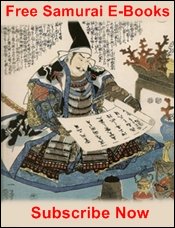
Get Free Exclusive Samurai Guides and E-books





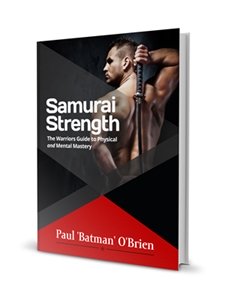
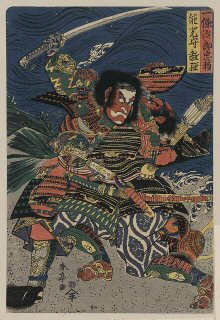
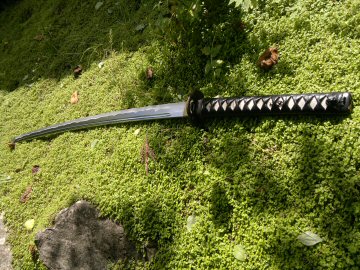
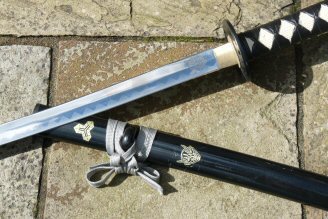
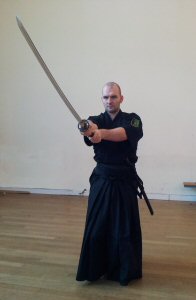
New! Comments
Have your say about what you just read! Leave me a comment in the box below.